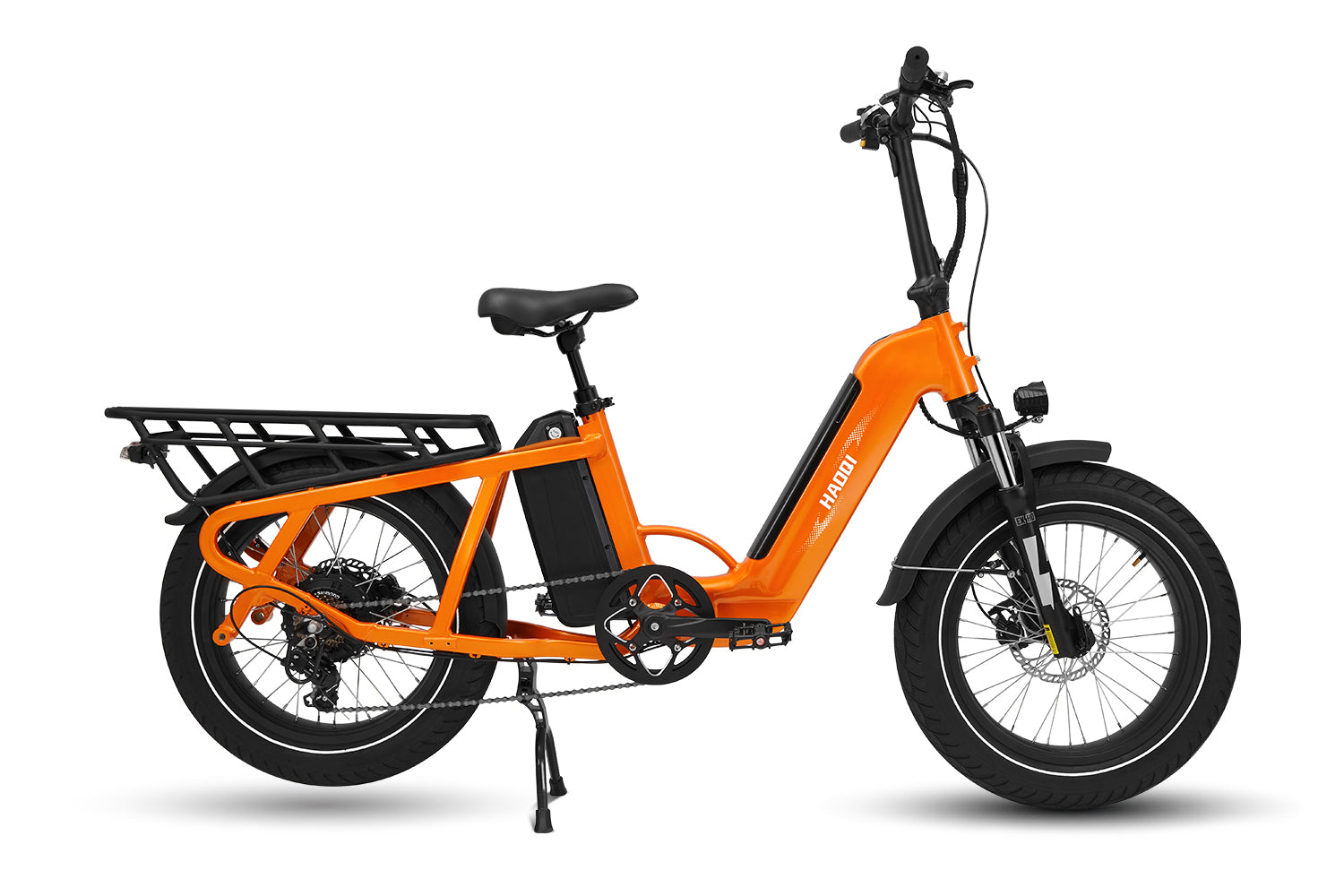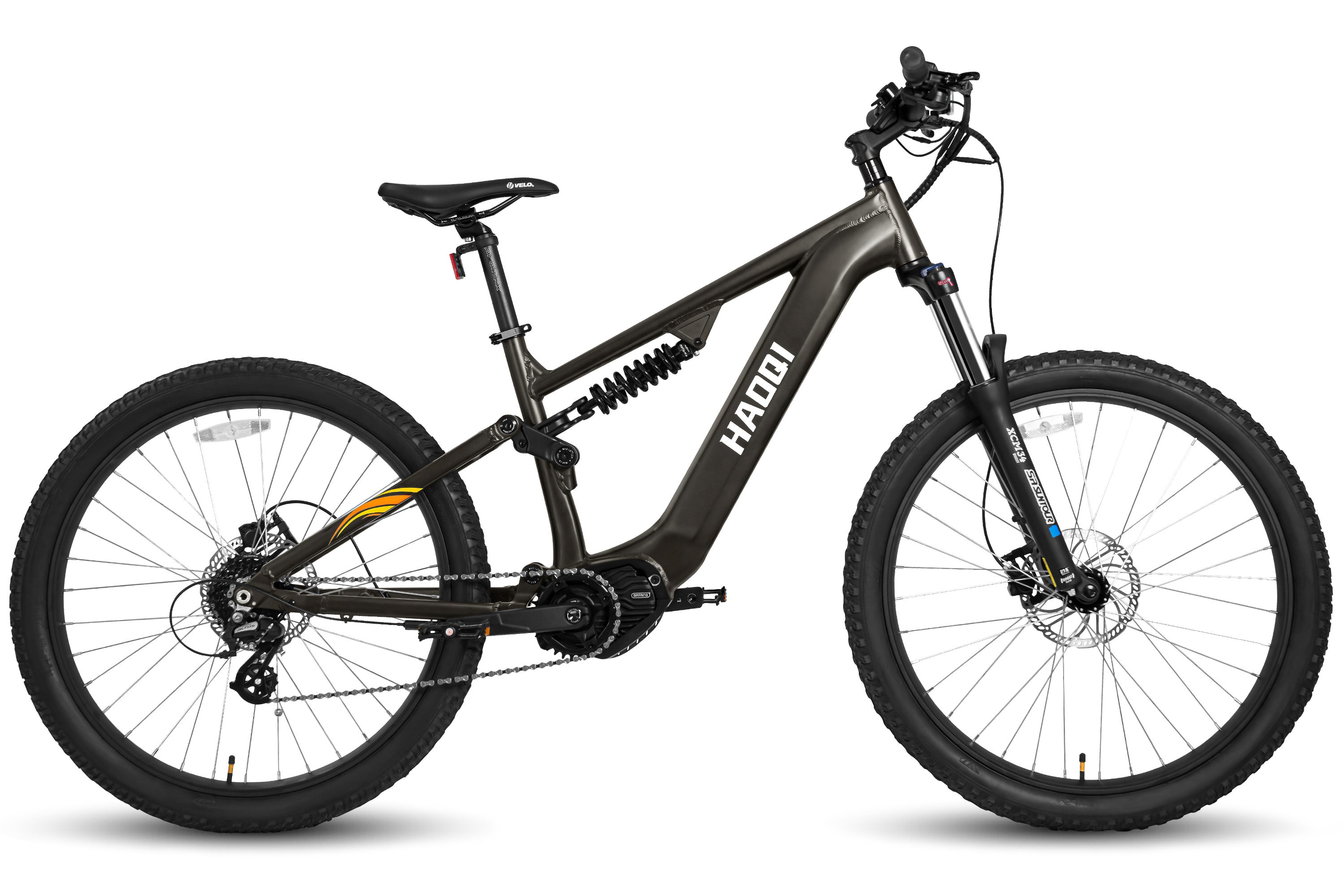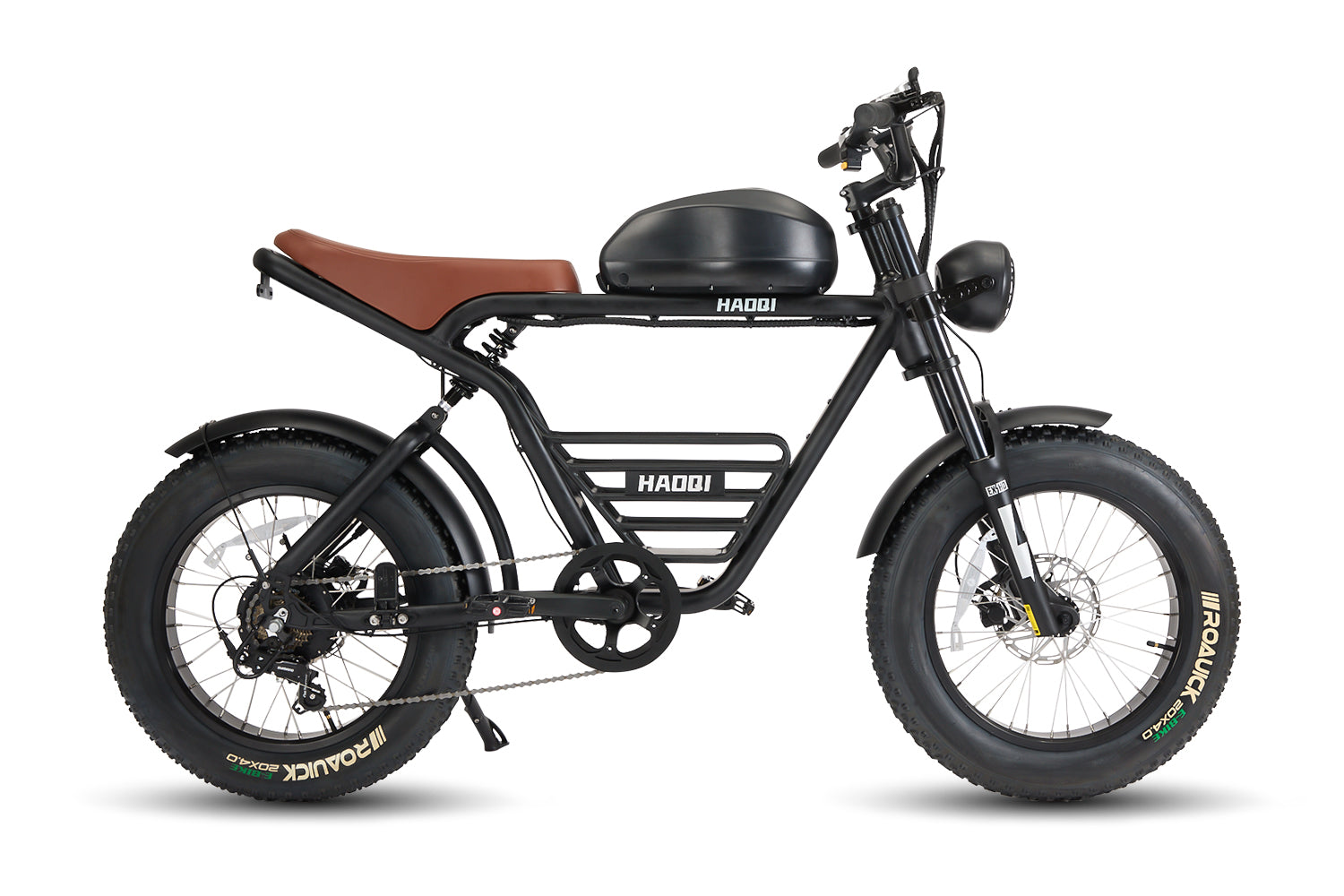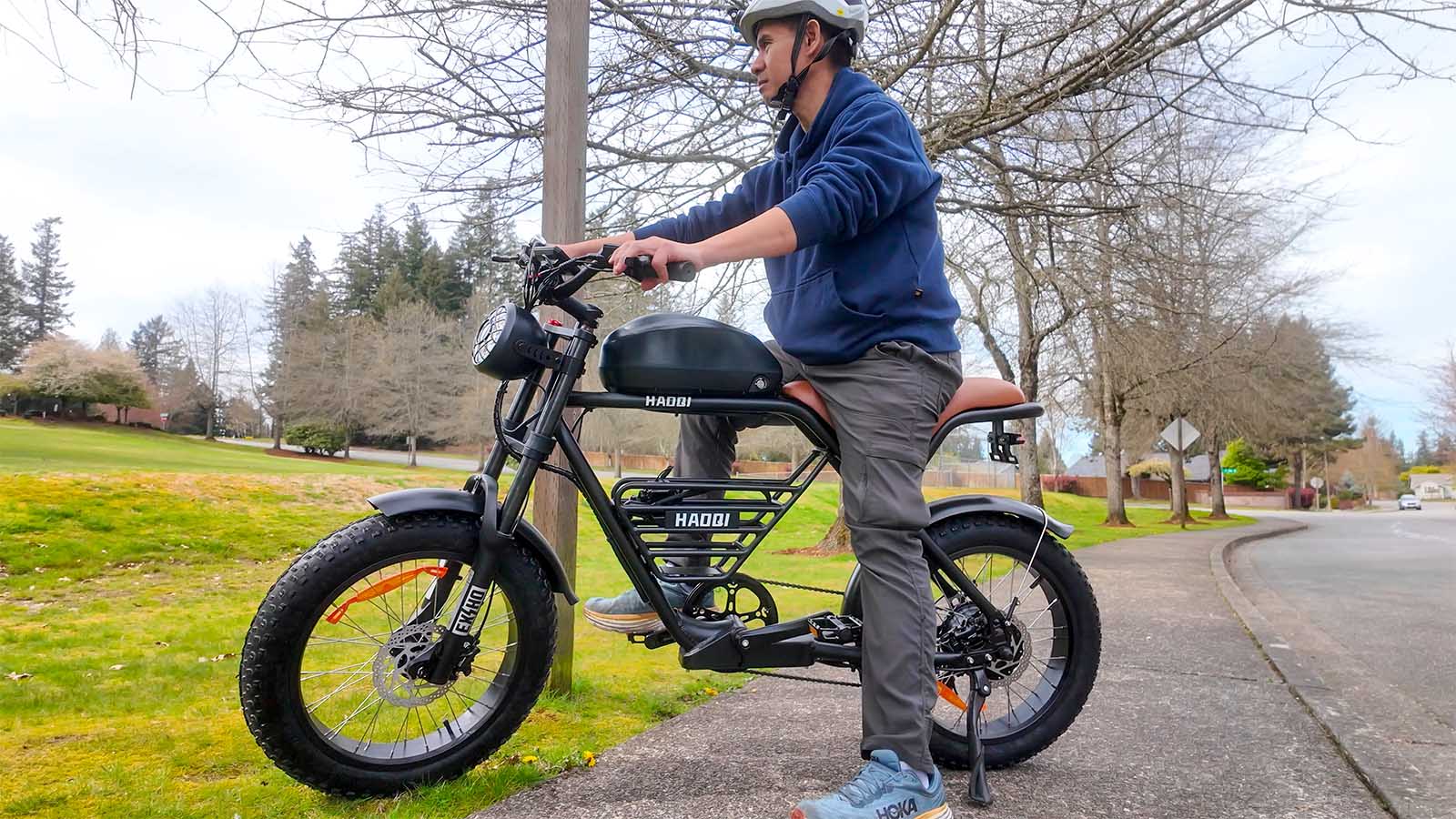Curious about how long do electric bikes last? Wondering how to extend the lifespan of your investment? In the electric mobility sector, understanding the durability of e-bikes is essential. From components to usage patterns, several factors influence their longevity. Whether you're a seasoned rider or considering your first e-bike purchase, it's crucial to know what to expect. Let's delve into the fascinating world of e-bike longevity and what factors contribute to it.

How Long Do Electric Bikes Last?
According to industry studies and expert opinions, e-bikes can last anywhere from 3 to 10 years. High-quality e-bikes can last for well over 10,000 miles, while lower-end models may show signs of wear and tear sooner. However, the exact lifespan of the e-bike typically depends on the quality of the bike, maintenance practices, and usage patterns. To comprehensively understand how long does an ebike last, you should know the average life of an e-bike's components first. Let's read on and help make informed decisions about the investment in this sustainable mode of transportation.
Components Life of an E-bike
An e-bike comprises several crucial components, each with its own lifespan and maintenance requirements. Understanding the longevity of these components is essential for gauging the overall lifespan of the e-bike.

Electric Bike Motors
The motor, often considered the heart of an electric bike, typically has a lifespan of 4 to 10 years with a distance between 3,000 to 10,000 miles. While some motors, especially those of superior quality, exceed this lifespan by over 10 years or 10,000 miles under optimal conditions. However, when you consider the lifespan of e-bike motors, it's also crucial to understand how long do electric bike motors last for different types and their respective characteristics:
Hub Motors
Integrated within the front or rear wheel, hub motors boast a simple yet robust design. Their isolation from drivetrain components minimizes issues stemming from mechanical wear. Commonly featured in e-bikes, hub motors typically endure between 10,000 to 15,000 miles with proper maintenance, equivalent to around 3 to 5 years of typical use for an average rider.
Mid-Drive Motors
Positioned centrally and integrated with the bike's crank, mid-drive motors offer superior balance and efficiency, especially on challenging terrains. Their complex design may necessitate more frequent maintenance, particularly for drivetrain components. These motors exhibit an extended lifespan, potentially lasting up to 20,000 miles or beyond, highlighting their durability and longevity.
Electric Bike Tires
Tire longevity depends on factors like tire quality, riding terrain, and maintenance. On average, a set of e-bike tires can last 3 to 5 years, running for 3,000 to 5,000 miles. In other words, a tire may last for 1 to 3 years, usually lasting between 1,000 to 3,000 miles. However, to extend the lifespan of tires, they need replacement after approximately 1 year or roughly 930-2,100 miles depending on usage patterns.
For riding uses, tires for commuting or short trips may run up to a longer distance with 2,000 to 4,000 miles. But if you want to ask how long do electric dirt bikes last with flat tires, the answer may be the opposite. Due to the sandy and rugged road, the tires for dirt e-bikes or off-road e-bikes may have a shorter lifespan when you always cross-country racing. Remember, whatever your uses, regular inspection and proper care for wear and tear can help extend the lifespan of electric bike tires.
Electric Bike Brake
A brake is a device used to slow or stop motion in machinery or vehicles. It endures wear with each use. With proper maintenance and timely replacement, brakes can last anywhere from 3,000 to 6,000 miles, though this can vary based on riding conditions. Besides, you can also assess the lifespan of brakes from its two types: rim brakes and disc brakes.
Rim Brakes
Rim brakes, commonly found on e-bikes, typically last 1 to 3 years with regular use and maintenance. However, this estimate can vary depending on riding frequency, terrain, and weather conditions.
Disc Brakes
In contrast, disc brakes boast a longer lifespan compared to rim brakes. The diligent-care disc brakes can last roughly 3 to 5 years or more. This extended durability stems from their design, which minimizes wear from debris and ensures consistent braking performance across diverse conditions.
Electric Bike Batteries

An e-bike battery stores electrical energy to power the electric motor, assisting the rider's pedaling, enhancing speed, and extending riding range. But do you know how long do batteries last on electric bikes after one charge? It normally covers 25 to 80 miles per charge. For example, the HAOQI ebike battery provides an approximate range of 80 miles per charge, while higher-capacity variants enable longer distances for prolonged cycling excursions.
In addition to battery endurance, the battery also has a lifespan. So how long do electric bike batteries last when made of lithium-ion? Generally, they endure 3 to 5 years or around 300 to 500 charge cycles. The lifespan of an e-bike battery varies based on usage, temperature, battery quality, and more.
- Battery Type: Lithium-ion batteries last 500 to 1,000 cycles, diminishing to 80% capacity.
- Usage: Frequency, terrain, rider weight, and assistance level impact lifespan. Besides, avoiding overcharging or deep discharges can help maintain the battery's health over time.
- Capacity and Quality: Higher quality batteries offer longer lifespan and range.
- Environmental Conditions: Extreme temperatures, both hot and cold, can impact the chemical reactions within the battery cells, potentially reducing their overall lifespan.
Electric Bike Chains
A bike chain is a series of interlinked metal segments that transfer power between the pedals and wheels. Its lifespan typically ranges from 1,000 to 3,000 miles, lasting 1 to 4 years. There are two major factors influencing its lifespan:
- Motor Type: Hub motors, integrated into the wheel, exert minimal force on the chain, extending its lifespan. Chains on hub motor e-bikes endure similar lifespans to those on regular bicycles when well-maintained. Conversely, mid-drive motors engage the chain directly, leading to quicker wear and tear due to the combined pedaling and motor power.
- Riding Conditions: Mud, dirt, and moisture accelerate wear and corrosion, shortening the chain's lifespan.
Therefore, due to friction and debris, regular cleaning, lubrication, and periodic replacement can extend their lifespan.
Electric Bike Gears
Bike gears are mechanisms that alter the ratio of rotations between the pedals and the wheel, adjusting speed. Well-crafted e-bike gears last as long as the bike itself, though some may last only 3 to 4 years.
Due to its affordability, you can replace or upgrade it when it wears or rusts. Cassettes and chains typically require replacement multiple times, lasting a few thousand miles at best. Therefore, for a better after-sale maintenance service, you should prioritize products like HAOQI offering warranties covering essential components for at least 2 years when purchasing an e-bike.
What Are the Factors That Affect the Life of Electric Bikes?
Due to its convenience, e-bikes are becoming increasingly popular due to their convenience and eco-friendly nature. However, like any other mode of transportation, the lifespan of electric bikes can be influenced by various factors. Understanding these factors is crucial in maintaining the longevity and performance of your electric bike.
Usage Frequency and Terrain Conditions
Regular and extensive use, especially on challenging terrains such as steep hills or rough off-road paths, can lead to increased wear and tear on various components. This can affect the motor and other critical parts like chains, tires, and brakes. Therefore, you should select an e-bike according to your intended usage to withstand specific terrains, to prolong longevity.
Maintenance Practices
Irregular maintenance practices, such as failing to properly inflate tires, ignoring signs of wear on the motor, or not following proper charging procedures for the battery, can significantly shorten the lifespan of an electric bike. Besides, inappropriate maintenance practices can lead to mechanical failures, decreased performance, and potentially costly repairs. It is crucial to prioritize proper maintenance to ensure the longevity and efficiency of the bike.
Charging Habits and Battery Quality
The quality of the battery itself and charging habits are critical factors that directly influence how long an electric bike battery lasts. High-quality batteries constructed with durable materials tend to have a longer service life compared to lower-quality alternatives. Additionally, if you often overcharge the battery overnight or let it completely drain before charging, the e-bike will be detrimental to its overall lifespan. It is important to follow the manufacturer’s recommendations for charging to maintain battery health.
Riding Style
The riding style adopted by riders can also impact the overall lifespan of various components. For example, aggressive riding behaviors such as sudden acceleration or abrupt braking may lead to increased stress on critical parts like chains, gears, and brakes. Conversely, adopting a smoother riding style with gradual acceleration and controlled braking can contribute to reduced wear on these components.
Environmental Conditions
Environmental factors such as temperature extremes can affect the performance and longevity of electric bike components. Exposure to extreme heat or cold can impact battery efficiency and overall performance. Riders need to consider storage conditions when not using their e-bikes regularly to mitigate potential adverse effects caused by environmental conditions.
How to Extend the Service Life of Electric Bicycles?
As an electric bike owner, you can take proactive measures to extend the service life of your e-bike and its components. By implementing proper maintenance practices and optimizing usage habits, you can significantly enhance the longevity and performance of your electric bicycle.
Regular Maintenance Checks
Routine inspections of critical components such as the motor, tires, chains, and gears allow you to identify any potential issues early on. This proactive approach enables timely repairs or replacements, preventing minor problems from escalating into more significant issues that could affect the overall lifespan of your e-bike. Here are some regular and simple methods to maintain the e-bike components.
- Motor: You need to keep the motor clean and free from debris, and ensure proper lubrication to prevent overheating and maintain optimal performance.
- Chain: Routine cleaning and lubrication of the chain is needed to reduce wear and tear, and regular checks for any signs of damage or stretching help timely adjustments or replacements.
- Tire: Regular tire pressure checks and inspections prevent wear and tear, and damaged or worn-out tire replacements ensure safe and efficient riding.
- Gears: You should keep gears clean and well-maintained, adjust and lubricate as needed to ensure smooth shifting and prevent premature wear on the drivetrain components.
Care for Battery Health
It's crucial to follow a few care tips to maintain optimal battery health:
- Avoid fully depleting the battery before recharging as partial charging is better for lithium-ion batteries.
- Store the bike in a cool, dry place, away from extreme temperatures.
- Regularly check for signs of damage or corrosion, and adhere to manufacturer-recommended charging and storage guidelines for prolonged battery life.
Avoid Overloading
When an electric bike overloads beyond its recommended capacity it can exert excessive stress on its components, potentially leading to premature wear and reduced lifespan. Adhering to weight limits specified by manufacturers ensures that critical parts such as chains, gears, brakes, and tires are not subjected to undue strain during operation.
Follow the Manufacturer's Recommendations
Manufacturers provide specific guidelines for charging cycles, maintenance routines, and optimal usage patterns tailored to their e-bike models. Adhering to these recommendations can significantly extend the life of your electric bicycle.
Conclusion
In conclusion, this guide has told everything you need to know about how long do electric bikes last. The lifespan of electric bikes hinges on various factors, including component quality, maintenance practices, and usage patterns. While some parts may require replacement over time, proper care can significantly extend the overall longevity of an e-bike. Keep them in mind and adopt proactive maintenance measures, you can ensure that your electric bikes provide reliable and enjoyable transportation for years to come.
FAQ
How long do electric bikes last on one charge?
The range of electric bikes on one charge varies depending on factors like battery capacity, terrain, and rider weight. On average, they can last anywhere from 20 to 80 miles per charge, with some high-end models boasting ranges of over 100 miles.
Can electric bike batteries be repaired?
Yes, electric bike batteries can often be repaired. Regarding different issues, components such as cells or the battery management system may need replacement or reconfiguration. However, repair options may vary based on the manufacturer and the specific model of the bike.





![HAOQI Antelope 500W Cargo Electric Bike (UL Certified) [electric bike] [HAOQI ebike]](http://haoqiebike.com/cdn/shop/products/haoqi-antelope-cargo-electric-bike-with-dual-battery-haoqiebike-com-1.jpg?v=1753954498&width=1500)
![HAOQI Squirrel Folding Electric Bike (UL Certified) [electric bike] [HAOQI ebike]](http://haoqiebike.com/cdn/shop/files/1_03c67b67-715e-4617-a648-51f108ceb425.jpg?v=1766473332&width=1500)

![HAOQI Eagle Long Range Electric Bicycle (UL Certified) [electric bike] [HAOQI ebike]](http://haoqiebike.com/cdn/shop/files/2_bf7ae46b-aad6-472a-9c14-d56ca3f0feb6.jpg?v=1755142722&width=1500)

![HAOQI Antelope Pro 750W Cargo Electric Bike (UL Certified) [electric bike] [HAOQI ebike]](http://haoqiebike.com/cdn/shop/products/haoqi-antelope-pro-cargo-electric-bike-with-dual-battery-750w-haoqiebike-com-1.jpg?v=1751610204&width=1500)









Leave a comment
All comments are moderated before being published.
This site is protected by hCaptcha and the hCaptcha Privacy Policy and Terms of Service apply.